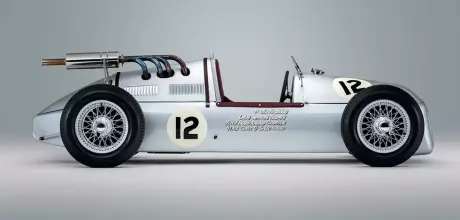1954 RA4 Vanguard - Ultra-rare Kiwi Formula Libre racer restored
Most of us have heard of Bruce McLaren. But the RA4 Vanguard also hails from New Zealand – and deserves to be better known.
Words James Page
Photography Gun Hill Studios
RA4 VANGUARD RACER THE OTHER KIWI RACER
Ultra-rare Kiwi Formula Libre racer restored
Following the end of World War Two, a new generation of enterprising young engineers came onto the motorsport scene. Many of them had either trained or worked in the aviation industry, and the post-war shortage of materials added improvisation to their skill sets. The Cooper Car Company, for example, was enjoying considerable success in the new, low-cost 500cc formula, and John Cooper recalled buying all the Morrison air-raid shelters he could, in order to use the steel in the construction of his rear-engined racing cars. He also sourced parts from a nearby firm that sold second-hand aircraft equipment, such as fuel pumps.
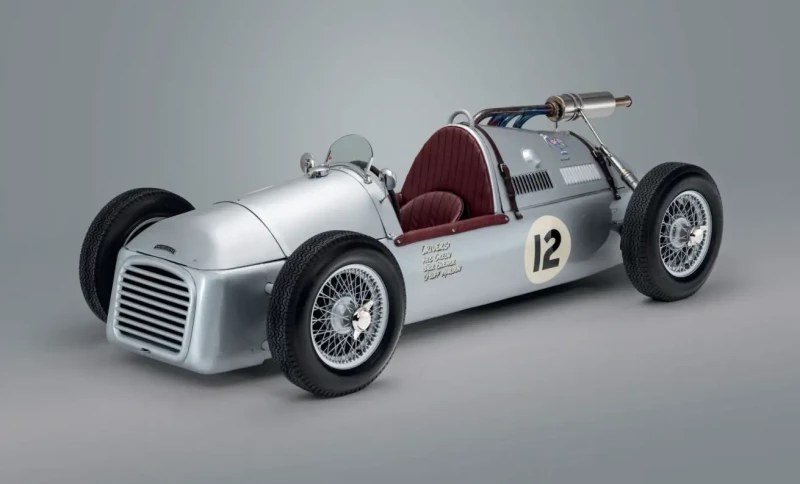
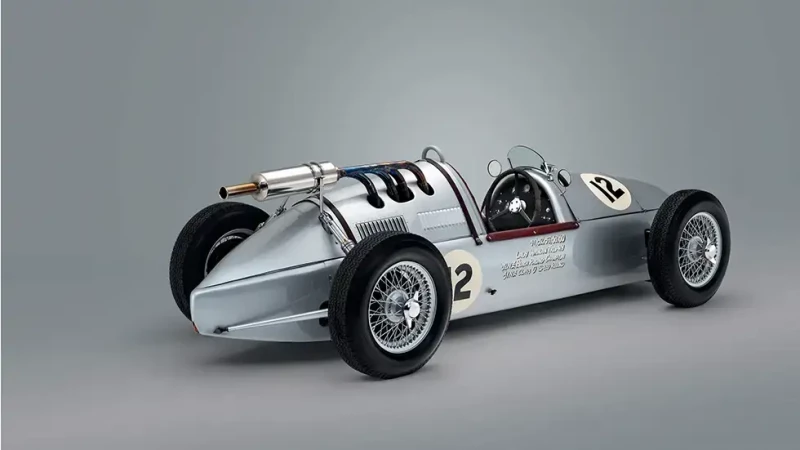
Thousands of miles away in New Zealand, two engineers shared not only Cooper’s talent for recycling but also his eye for aircraft parts. They would even follow him in bucking the prevailing trend by building a rear-engined racer – although their inspiration came not from little 500cc racers but from the pre-war Auto Union Grand Prix cars. Hec Green and Jack Brewer had been aircraft mechanics during the war and became partners in a Christchurch engineering business. They were both keen racers and got hold of a copy of a report that had been written by Cameron Earl for the British Intelligence Objectives Sub-Committee. Published in 1947 by His Majesty’s Stationery Office, it detailed the design of the all-conquering Mercedes and Auto Union ‘Silver Arrows’ of the 1930s.
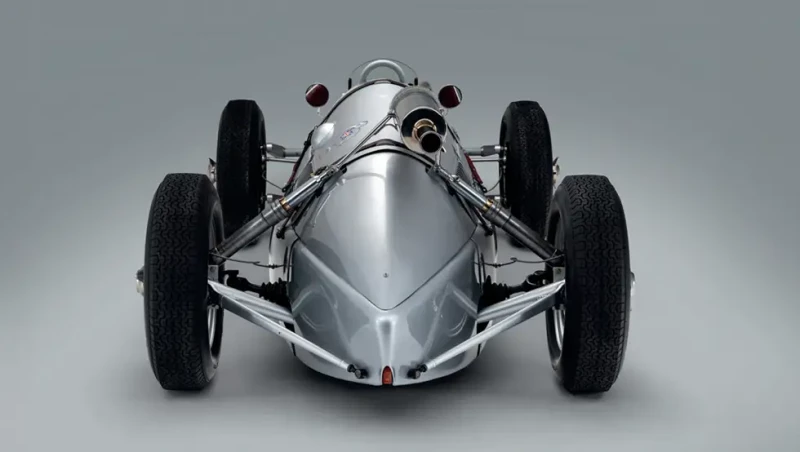
Green and Brewer were particularly struck by the rear-engined layout of the Auto Unions, and set about building their own car along the same lines. With limited budget and materials, lateral thinking and ingenuity were required. Their aircraft experience came in useful and war-surplus sales provided rich pickings. Aluminium propellers, for example, were a good source of metal, but the aviation influence was most obvious in the suspension design. The front suspension featured parallel trailing links, but the springing medium was an adjustable system of rubber ‘bungee’ cords, as used in aircraft landing gear. There was a low-pivot swing-axle set-up at the rear, where hydraulic oleo struts from a Curtiss P-40 Kittyhawk replaced the usual coils or leaf springs.
At the heart of their design was a 2088cc four-cylinder engine from a Standard Vanguard, from which they managed to extract 200bhp. Among the many modifications were a camshaft designed and ground by Hec Green, twin SU carburettors, and a supercharger that was chain-driven from the front of the crankshaft. The gearbox was originally a Citroën unit but, when that proved to be unreliable, Hec Green designed a three-speed transaxle that is still going strong more than 70 years later.
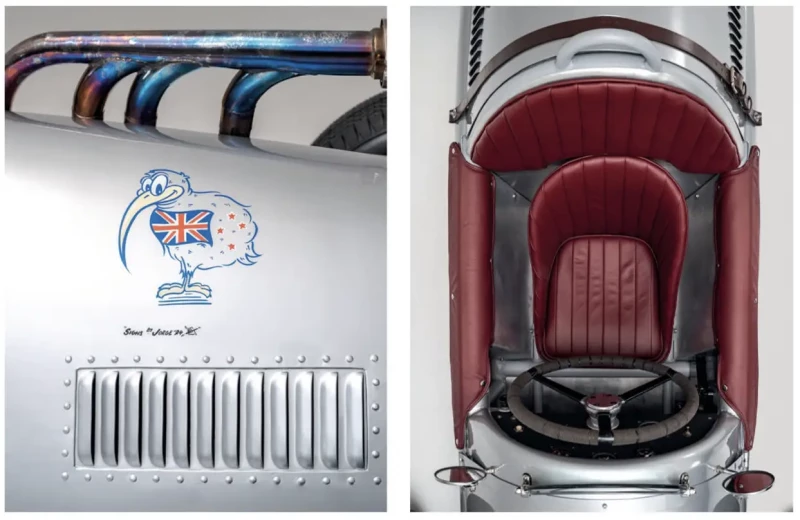
The finished racing car was known in period simply as the RA Vanguard, but it’s now referred to as the RA4 Vanguard in order to signify its position in a series built by Green and Brewer. The first was a Wolseley-engined special that Green raced in the late 1940s and early ’50s. That was followed by a Vauxhall-engined single-seater for Pat Hoare, then a two-seater based on a Fiat 1100 for Des Wild. After RA4 came another car with a rear-mounted Vanguard engine. Now referred to as RA5, it was driven by Green to seventh place in the 1961 Lady Wigram Trophy, among a field that included Jack Brabham, Stirling Moss and Bruce McLaren.
Jack Brewer was at the wheel for the RA4 Vanguard’s maiden outing in the 1951 Lady Wigram Trophy, but the car failed to start because of a holed piston. They returned to the same event in 1952 and ’53, retiring on both occasions, but during this period the car did win the South Island Beach Racing Championship, as well as setting a national Class D 1km speed record of 188.89km/h (117mph).
The RA4 Vanguard continued to race through the 1950s – and it remained competitive, too. At Dunedin in 1958, Geoff Mardon had it running as high as third – behind only the Maserati 250F of Ross Jensen and the Cooper of Bruce McLaren – before a wheel came off. It was later driven by veteran racer Les Moore, who had won the Lady Wigram Trophy in 1951 and ’52 at the wheel of an Alfa Romeo. Jack Brewer recalled that Moore had modified the RA4 Vanguard’s rear suspension, and his theory was that a rear wheel might have ‘tucked under’ while cornering at high speed at Saltwater Creek in 1960. The car rolled and Moore suffered fatal head injuries.
The remains of the RA4 Vanguard languished in Christchurch for a number of years before eventually being rescued by Grant Cowie and sold to John Holdsworth, who commissioned an Auckland workshop to build a new chassis and body in which to install the surviving mechanical components. Compared to the original car, the end result was said to be too long, too wide and had a host of incorrect features, but it did at least keep those vital components together.
Mike Courtenay then bought it and his brother John raced it at Hamilton, an outing that sadly ended with a suspension failure. The car was sold again in 1995 to Richard Anderson, who raced it in historic events until it was sidelined by the latest in what was apparently a series of head-gasket failures. Anderson decided that the time had come to embark on a total restoration that would – with the help of Jack Brewer himself – return the RA4 Vanguard to how it would originally have been built. This included refitting the ‘rubber band’ front suspension and original Kittyhawk oleo rear struts.
Anderson raced the rebuilt car for a number of years before selling it to Rob Whitehouse and Kiwi saloon-car ace Paul Radisich. It was then brought to the UK, where Ian Jones enters the story. Having worked in IT and decided that his career was ‘going nowhere’, Jones had been in his late 40s when his wife bought him a ‘life-changing’ trial flight as a gift. He started learning to fly, got his licence, and ended up doing aerobatic flying in a Yak-52 and then a Yale. His passion for warbirds led to him collecting ‘anything to do with World War Two – United States Air Force, RAF, Battle of Britain’. He also started to create objects such as tables using the old aircraft parts that he’d find on his travels, and it was the aviation link that attracted him to the RA4 Vanguard when it came up for auction with Bonhams at the 2021 Goodwood Festival of Speed.
‘I did a bit of research on it and thought it was quite interesting,’ he recalls. ‘It was designed by two ex-Air Force engineers just after the war; it’s made up of aircraft parts; it had strong links back to Germany in terms of its design; and it’s relatively unknown. I was lucky because no-one from the States or Europe could come over [for the auction] because of Covid. Hardly anyone was bidding, so I bought it.’
Jones got the car running with help from a friend, and his brother-in-law then introduced him to Gareth Burnett at historic-racing specialist Pace Products. ‘I thought, well, I’ll just get it running and start racing, but, as soon became apparent, that wasn’t going to be good enough. That kicked off nearly 2½ years of stripping it back, right down to the last nut, and starting a major rebuild.
‘On the chassis, every single joint was cracked. The panels, none of them were straight – you could run your fingers along them and you’d slice your fingers off. The engine was producing only 70bhp instead of 200, so we just took the bull by the horns. The engine was rebuilt with new con-rods, new crankshaft, pistons, cylinders – everything within that block is new. Period, but new. We rebuilt the supercharger, which is off an aircraft, and the suspension was all rebuilt. We got new bungees from an American aircraft company in the States, same as they were before. At the back, we stripped all the paint off the oleo struts, redid them and they now hold their pressure.’
Thankfully, there were relatively few problems along the way. Some minor tweaks were needed in order to accommodate a custom-built limited-slip diff, but otherwise the project ran smoothly – for the most part. Jones admits that, whenever it didn’t, ‘I was probably the issue! ‘We had a certain budget and a certain remit to go by in terms of the build,’ he explains, ‘but that went from getting it running and looking OK to, “Would Hec Green and Jack Brewer be proud of what we’ve done here?” It doubled in budget to get to that standard and that finish. So it was me that was the issue – moving the goalposts as we went through stuff. My remit to the team was that, when we do the launch, I want you to stand by that car and be proud of what you’ve done, rather than putting your hand over something you don’t want anyone to see.’
The body panels, for example, were reshaped to make sure they fitted properly and repainted to ‘a concours standard’, a 300-hour process in total. The paint bill quickly multiplied and the final touches were beautifully applied by a signwriter. ‘We could have just stuck stickers on it and probably no-one would have noticed, but I wanted it to be done as it would have been – and as the years go by, that will age nicely. Even the number 12 on the roundels was copied exactly from old photographs.’ The intention is still to go racing with it – most likely with experienced driver Burnett at the wheel – and few cars will look smarter on the grid. Having been painted various colours in period, including orange and green, the RA4 Vanguard is now finished in a BMW shade of silver, and examples abound of the fastidious approach that’s been taken, from spending months finding somebody who could rebuild the water-temperature gauge, to trimming the seat.
‘The backrest is basically leather on an aluminium frame, and at the back they’d normally staple it or glue it. The guy who did it gave it to me and I said, “The front looks beautiful; what’s going on with the back?” He said, “No-one will see it.” I said that I’d know it was there, explained how I wanted it, so he did it and it was beautiful. The whole of the car was built on that premise. If you’re going to do it and spend that kind of money, you’ve got to do it well.’
When the restoration was finished, Jones (pictured left, at the wheel) hosted a launch party and invited everyone who’d been involved (also pictured). He got up to say a few words about the car’s history and said that he hoped the end result would have made its original creators proud. As he did so, his voice caught. A project that had begun with a little internet browsing during Covid had turned into something more significant, and it’s little wonder that he had become so emotionally involved, or that he came to admire Hec Green and Jack Brewer so much. ‘I liked their attitude, their can-do attitude: “We haven’t got anything, so let’s go and get a lot of aircraft parts. Let’s not follow everyone else with a front-engined car. Let’s do something different.” I think that’s what appealed to me about those two guys.’
For someone who was a project manager in his ‘old life’, there was also great satisfaction in bringing together the team that not only restored the RA4 Vanguard, but who will continue to be involved as this unique car returns to the track – and it has just been confirmed that it has an entry for the Goodwood Trophy at this year’s Revival.
‘It’s a collaborative approach. They are part of something really special and they should take the credit for it. It’s about bringing people along on that journey. For me, that is just as important as the car, and it gives me so much pleasure.’
THANKS TO Emma Keeys at Gun Hill Studios, gunhillstudios.com.
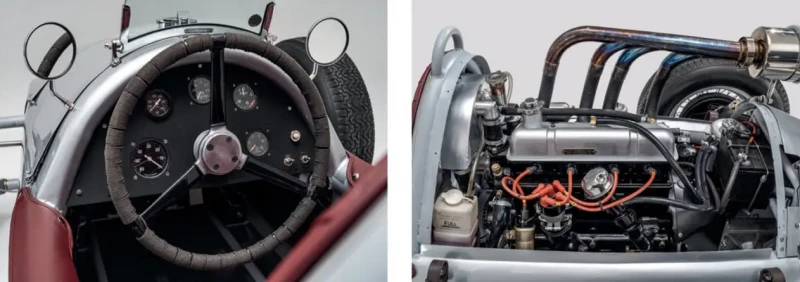
Clockwise, from far left Forward cockpit was advanced for the era; traditional sign-written livery; simple command post, perfectly trimmed; Standard Vanguard engine produces 200bhp; like an Auto Union in miniature.
Clockwise, from above left. The early days, racing at Wigram, 1952; again in around 1959, with creators Green and Brewer at left; now, following a painstaking restoration during which the body panels alone were treated to 300 man-hours of labour.


